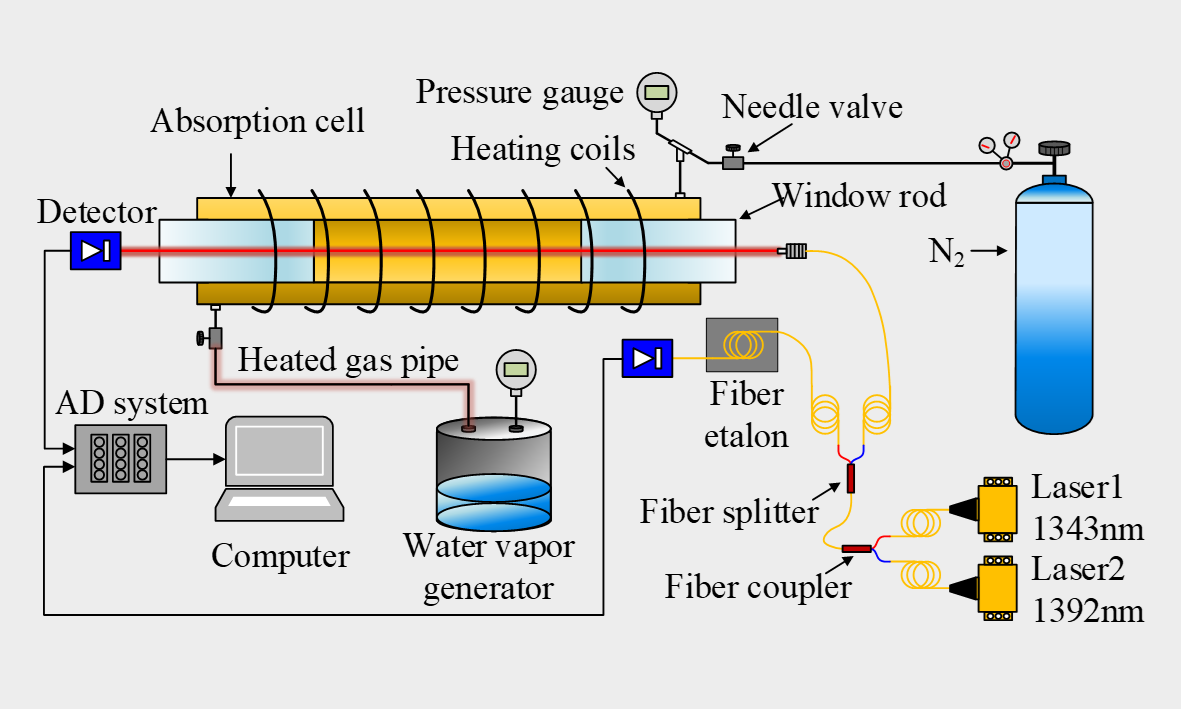Reviewed by Lexie CornerMar 8 2024
A team of researchers led by Professors Xiaoming Gao and Kun Liu from the Hefei Institutes of Physical Science (HFIPS), Chinese Academy of Sciences (CAS), has recently devised a concentration-independent pressure sensing technique for high-temperature combustion diagnostics. This method is based on two-color laser absorption spectroscopy.
 Schematic of pressure measurement using two-color laser absorption spectroscopy in heated absorption cell. Image Credit: WANG Ruifeng.
Schematic of pressure measurement using two-color laser absorption spectroscopy in heated absorption cell. Image Credit: WANG Ruifeng.
The results of this research have been published in Optics Letters.
Aero engines are transitioning towards high-temperature and high-pressure combustion to enhance thermodynamic effectiveness. Pressure is a critical parameter for monitoring the performance of engines and diagnosing engine faults. However, traditional contact pressure sensors disrupt combustion flows and are limited by the temperature tolerance of sensor materials.
The study’s researchers devised a non-contact pressure sensing technique for high-temperature environments and tested it at temperatures up to 1300 K. The study primarily addressed the challenge of accounting for the impact of molecular concentration on gas pressure measurements in such environments.
Researchers discovered that the concentration variable could be alleviated by linking the collision-broadened line widths of dual absorption lines. This breakthrough enables researchers to achieve concentration-independent pressure measurement.
To validate this discovery, the team utilized dual absorption lines of H2O near 1343 nm and 1392 nm in an accurately designed heated absorption cell, considering that the primary product of hydrocarbon-fueled combustion systems is H2O. They achieved temporal resolution and pressure measurement uncertainties of 50 μs and 3 %, respectively.
Our finding provided a valuable tool for pressure sensing in high-temperature environments and can promote the development of laser-based multi-parameter diagnostics for combustion science.
Kun Liu, Study Lead and Professor, Hefei Institutes of Physical Science, Chinese Academy of Sciences
Journal Reference:
Wang, R., et al. (2024) Pressure sensing with two-color laser absorption spectroscopy for combustion diagnostics. Optics Letters. doi:10.1364/OL.506204